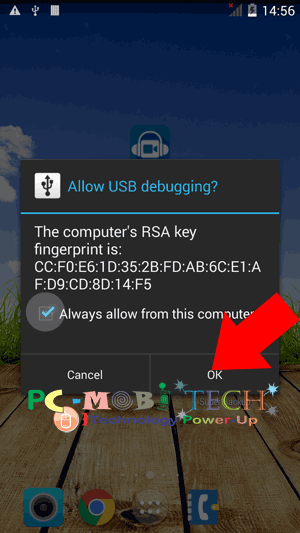


Then, applications dependent on the security of TEE for encryption key storage or home/work partitions, for example, either stop functioning entirely or are no longer secure, and that’s why most IT managers strongly discourage rooting phones. Similarly, some of the important security features of smartphones, such as Samsung’s Trusted Execution Environment (TEE), can be disabled when a smartphone is rooted. In that case, the security risk rises quickly.Ī rooted smartphone - especially one that doesn’t get updated - creates a security problem that gets worse over time. On the other hand, IT managers know that many users root their phones and then engage in unsafe behaviors, such as installing pirated applications or malware - even unintentionally. Get our comprehensive guide and template for developing a BYOD policy tailored to your organization.
APP TO UNROOT ANDROID PHONE INSTALL
If a user roots their smartphone and doesn’t do anything outside of normal day-to-day usage, it becomes difficult to point and say, “This is a big security problem.” But if a rooted phone stops checking for software updates and security patches (or cannot install them because the kernel is no longer signed properly), then even a phone used in a very normal way slowly turns into a ticking time bomb running old software and applications. Quantifying that increased level of risk is hard, because it depends on how the phone was rooted and what happens next. Since today’s smartphones operate in an environment filled with threats from attackers, buggy or malicious applications, as well as occasional accidental missteps by trusted users, anything that reduces the internal controls in the Android operating system represents a higher risk. Rooting disables some of the built-in security features of the operating system, and those security features are part of what keeps the operating system safe and your data secure from exposure or corruption. Is rooting your smartphone a security risk? Any irregularities in the software will be noted. With Samsung’s Android devices featuring Samsung Knox, the user can simply go into Settings and tap “About Phone” to review the software versions on their device.
APP TO UNROOT ANDROID PHONE DOWNLOAD
Users can also download a root checker app or a terminal client to determine if superuser access is configured. These applications are typically installed as part of the rooting process to allow access to superuser privileges. The presence of a Kinguser or Superuser application on the device is an obvious sign the device has been rooted. Users who are uncertain if their phone has been rooted have several ways to check. In other instances, the motivation has been to remove preloaded applications. In the early years of Android smartphones, rooting was popular among tech enthusiasts as a way to strip back user interface customizations made by manufacturers to the Android platform. They may want to install a specific application, change certain settings, or just don’t like being told what they can and can’t do with their phone. People root smartphones for many reasons. Disabling these controls is called “unlocking” the phone, but this does not involve gaining superuser permissions. To help enforce the contract terms, phones may be configured by the carrier so they can only be used on certain networks. especially, phones are often sold with a subsidy provided by a telecom carrier. It’s also important to note that rooting is different from unlocking a phone. Android phones sold for development purposes, for example, may allow rooting to help in the testing and debugging process. Not everyone rooting a phone breaks in by finding a bug. Some third-party applications may offer to root your device for you, but users should be particularly cautious of these as they have the potential to introduce malware or other security loopholes. Rooting is generally carried out using Android SDK tools to unlock the bootloader and then flash a custom image to the device. In the Android ecosystem, since the platform is based upon Linux permissions and file-system ownership, rooting means gaining “superuser” access. Rooting is sometimes called “jailbreaking,” as it lets the user break out of the constraints of the operating system. Rooting phones, no matter what the operating system, usually means discovering a bug of some sort that allows you to bypass internal protections and gain complete control over the operating system - to become the “root” user, who has all privileges and all access. One issue keeping digital security and IT managers awake at night is smartphone rooting. Companies allowing employees to bring their own device (BYOD) for work purposes are toeing a fine line: providing workers with the ability to use a smartphone or tablet they’re most comfortable with, but also subjecting the enterprise’s data to potential security risks.


 0 kommentar(er)
0 kommentar(er)
